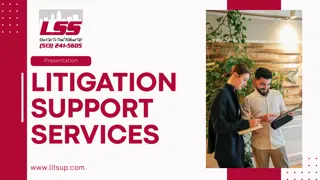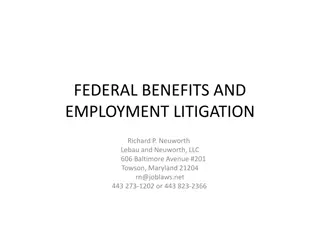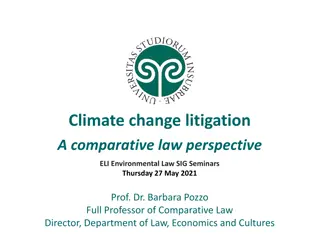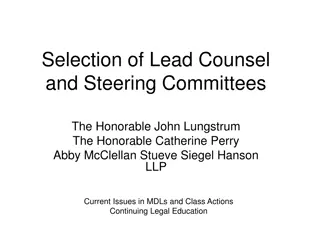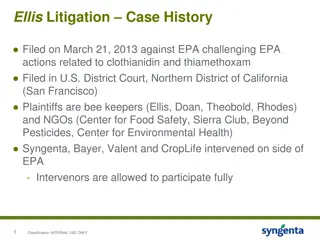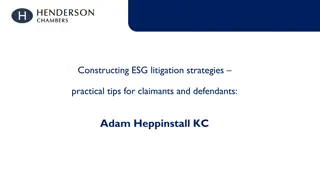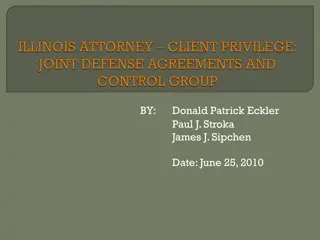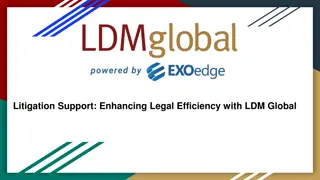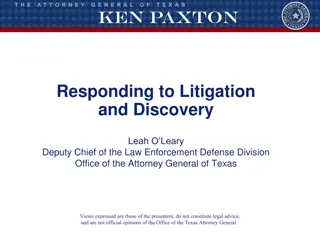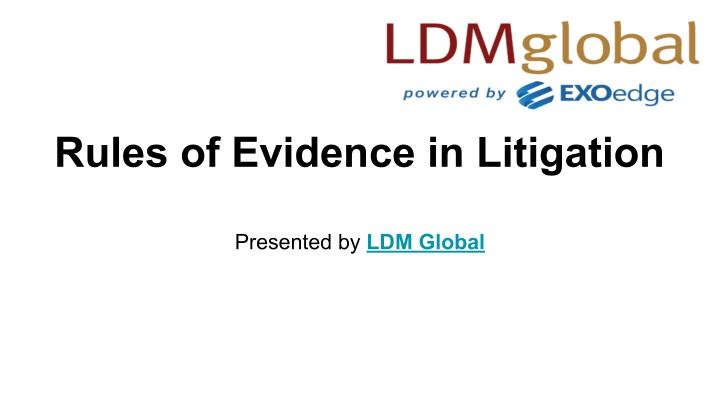
Rules of Evidence in Litigation
The "Rules of Evidence in Litigation" presentation by LDM Global provides an overview of the fundamental principles governing the admissibility of evidence in legal proceedings. It highlights the importance of evidence rules in ensuring fairness, r
Download Presentation

Please find below an Image/Link to download the presentation.
The content on the website is provided AS IS for your information and personal use only. It may not be sold, licensed, or shared on other websites without obtaining consent from the author. If you encounter any issues during the download, it is possible that the publisher has removed the file from their server.
You are allowed to download the files provided on this website for personal or commercial use, subject to the condition that they are used lawfully. All files are the property of their respective owners.
The content on the website is provided AS IS for your information and personal use only. It may not be sold, licensed, or shared on other websites without obtaining consent from the author.
E N D
Presentation Transcript
Rules of Evidence in Litigation Presented by LDM Global
Introduction to Rules of Evidence The rules of evidence govern what information can be presented in court. Aim: Ensure fairness, reliability, and justice in legal proceedings. Common in civil, criminal, and commercial litigation.
Key Rules of Evidence 1. 2. 3. 4. 5. Relevance Evidence must be directly related to the case. Hearsay Rule Statements made outside of court are generally not admissible. Best Evidence Rule The original document is required instead of copies. Privilege Certain communications (e.g., attorney-client) are protected. Authentication Evidence must be proven genuine before being admitted.
Conclusion & Importance Adhering to evidence rules ensures credibility and justice. Violations can lead to exclusion of evidence or case dismissal. Understanding these rules is crucial for litigators and legal professionals.


